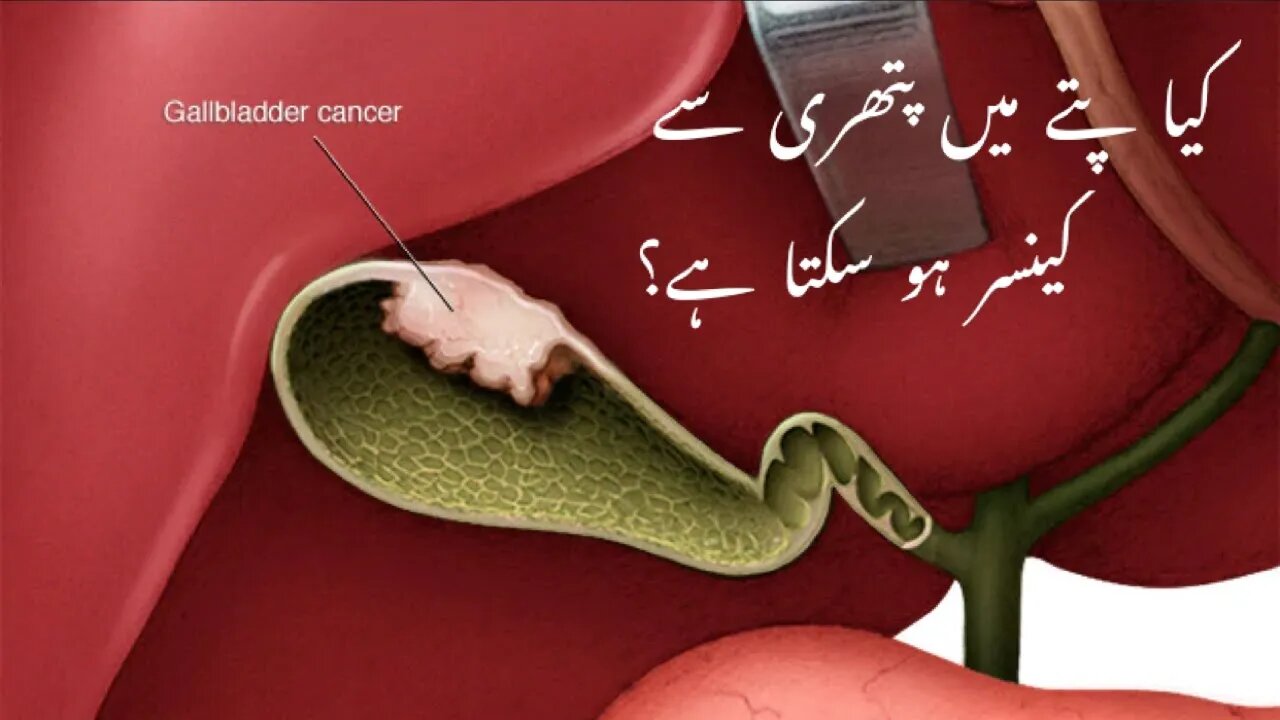Premium Only Content

Gallbladder cancer Urdu video
#gallbladdercancer #adenocarcinoma #hubetabibi
Queries:
gallbladder cancer
gallbladder cancer symptoms
gallbladder cancer causes
gallbladder cancer diagnosis
gallbladder cancer treatment
pitte ka cancer
Your gallbladder is a small sac-like organ about 3 inches long and 1 inch wide that lives underneath your liver. Its job is to store bile, which is a fluid made by your liver. After being stored in your gallbladder, bile is released into your small intestine to help digest food.
Gallbladder cancer is rare.
It’s almost always adenocarcinoma, which is a type of cancer that starts in glandular cells in the lining of your organs.
Doctors don’t know exactly what causes gallbladder cancer. They do know that, like all cancer, an error, known as a mutation, in a person’s DNA causes uncontrolled rapid growth of cells.
As the number of cells quickly increases, a mass, or tumour, forms. If not treated, these cells eventually spread into nearby tissue and to distant parts of the body.
There are risk factors that increase the odds of gallbladder cancer. Most of them are related to long-term gallbladder inflammation.
Having these risk factors doesn’t mean you’ll get cancer. It just means your chances of getting it may be higher than someone without the risk.
Gallstones are little chunks of hardened material that form in your gallbladder when your bile contains too much cholesterol or bilirubin — a pigment formed when red blood cells break down.
When gallstones block the passageway — called bile ducts — out of the gallbladder or in your liver, your gallbladder becomes inflamed. This is called cholecystitis, and it can be an acute or long-term, chronic problem.
Chronic inflammation from cholecystitis is the biggest risk factor for gallbladder cancer. According to the American Society of Clinical Oncology (ASCO), gallstones are found in 75 to 90 per cent of people with gallbladder cancer.
But it’s important to remember that gallstones are extremely common and having them doesn’t mean you’ll get cancer. According to ASCO, over 99 per cent of people with gallstones never get gallbladder cancer.
Some other factors associated with the risk of gallbladder cancer are:
Porcelain gallbladder. This is when your gallbladder looks white, like porcelain, because its walls are calcified. This can occur after chronic cholecystitis, and it’s associated with inflammation.
Gallbladder polyps. Only about 5 per cent of these small growths in your gallbladder are cancerous.
Sex. According to the ACS, women get gallbladder cancer up to four times more often than men.
Age. Gallbladder cancer typically affects people over 65. On average, people are 72 when they find out they have it.
Ethnic group. In the United States, Latin Americans, Native Americans, and Mexicans have the highest risk of gallbladder cancer.
Bile duct problems. Conditions in the bile ducts that block the flow of bile can cause it to back up into the gallbladder. This causes inflammation, which increases the risk of gallbladder cancer.
Primary sclerosing cholangitis. Scarring that forms due to inflammation of the bile ducts increases your risk of bile duct and gallbladder cancer.
Typhoid. Salmonella bacteria cause typhoid. People with chronic, long-term infections with or without symptoms have a higher risk of gallbladder cancer.
Family members with gallbladder cancer. Your risk goes up slightly if there’s a history of it in your family.
-
 LIVE
LIVE
TimcastIRL
1 hour agoDemocrat LAUNCHES IMPEACHMENT Against Trump Citing Deportation, Abrego Garcia Case | Timcast IRL
20,849 watching -
 LIVE
LIVE
vivafrei
1 hour agoELECTIONS CANADA RESULTS LIVE STREAM WITH VIVA COMMENTARY!!!
3,873 watching -
 1:33:55
1:33:55
Glenn Greenwald
7 hours agoGaza Starves, Pro-Israel Propagandists Escalate Extremist Rhetoric and Actions | System Update #444
47.8K90 -
 LIVE
LIVE
GrimmHollywood
9 hours ago🔴LIVE • GRIMM HOLLYWOOD • SHADOW OF THE ERDTREE FIRST PLAYTHROUGH • PART 1
94 watching -
 LIVE
LIVE
megimu32
3 hours agoON THE SUBJECT: This Timeline is Broken: Epstein, Aliens & Summer Anthems
262 watching -
 1:02:42
1:02:42
Donald Trump Jr.
8 hours agoMAHA Means Business, Interview with Calley Means | TRIGGERED Ep.237
87.1K43 -
 LIVE
LIVE
Joker Effect
28 minutes agoWhy aren't you trying to enjoy yourself? Live a little!
278 watching -
 LIVE
LIVE
NeoX5
2 hours agoTyping of the Dead | Don't Be Afraid 2 | Rumble Gaming
40 watching -
 57:50
57:50
BonginoReport
5 hours agoFAKE News In A Downward Ratings Spiral - Nightly Scroll w/ Hayley Caronia (Ep.36)
55.6K36 -
 7:58:02
7:58:02
Dr Disrespect
10 hours ago🔴LIVE - DR DISRESPECT - TRIPLE THREAT CHALLENGE - WZ, PUBG, FORTNITE
137K11